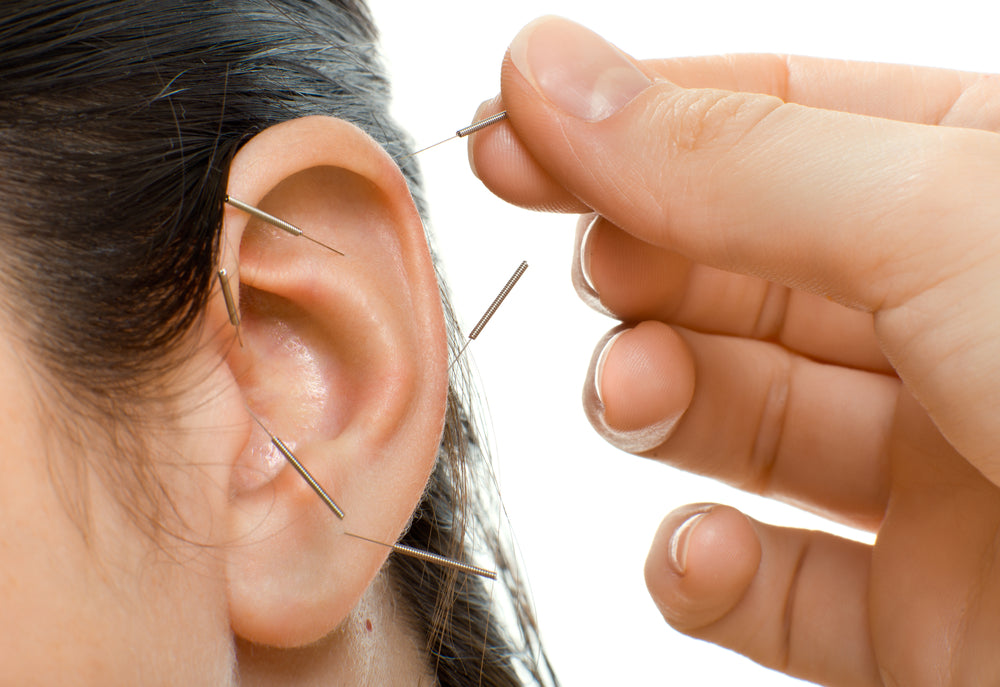It might seem surprising, but the ear is point of interconnection between different organs in many different healing philosophies and systems. Though acupuncture-based auriculotherapy relies on ancient principles, most of its major techniques were developed in the last century in the West. Its full range of applications is relatively massive, but its most common uses include treating pain, addiction, emotional trauma, shock and acute stress. As such, it’s been used for treatment in the military – especially as an alternative to opioids – and for disaster relief.
Ear acupuncture history
Dr. Paul Nogier, a French neurologist, and Frank Bahr M.D., a German physician, are both credited with establishing the Western foundations of this therapy in the 1950s and 1960s. In 1972, a Hong Kong physician named H.L. Wen, M.D. discovered auricular acupuncture’s application for opioid addiction, as the treatment is remarkably effective for curbing the symptoms of withdrawal. This treatment was then pioneered in a New York City rehabilitation centre in 1974, paving the way for the foundation of the National Acupuncture Detoxification Association (NADA) in 1985. NADA’s important work centres on training practitioners, standardizing protocols, and advocating for increased public access to treatment. Because of their invaluable efforts, ear acupuncture has become commonplace in disaster relief and healthcare across the world. The NADA protocol remains one of the cornerstones of auricular acupuncture practice. Dr. Niemtzow’s “battlefield acupuncture” also represents an important contribution to the field. This simplified treatment method requires the application of five needles per ear, and is majoritarily used by the United States and Chinese military both abroad – for the treatment of pain and shock – and domestically. The major advantage of this technique is that it’s relatively simple and cost-effective: practitioners only need three to four hours of training, rather than the more comprehensive program offered by NADA. This aspect of the technique is also its main drawback, as it represents a less holistic and targeted approach to various problems. The NADA protocol especially recommends the Shen Men and Reverse Shen Men points for the trauma response and disaster relief. Their training program is however much more comprehensive, and integrates different instruments and points not covered by Dr. Niemtzow’s approach.
Other philosophies
One of the main branches of alternative medicine that concerns itself with the treatment of the ears is reflexology, which maps the part of the body to this extremity. Though similar in principle to auricular acupuncture, the connection points identified in reflexology are different from the ones in acupuncture.
Needles, seeds and beads
An auricular acupuncture practitioner’s main tools are very small acupuncture needles, press tacks, vaccaria seeds and beads. All of these instruments are minimally intrusive, and incredibly precise. The average needle used for this purpose is the width of a hair, and will only produce a minor pinching situation.
Auricular beads are particularly useful for re-stimulation, and therefore they’re often recommended for patients who want to quit smoking: pressing down on the beads helps curb cravings and other impulsive behaviours. These devices work following acupressure principles; though acupuncture is more closely associated to needles, it relies more precisely on the stimulation of points along the meridians. Beads can also be replaced by vaccaria seeds, a more natural alternative.
Applications
- Treating intense short term stress, shock and dissociation, as well as long term emotional trauma and addiction
- Alleviates symptoms of withdrawal and stress: can be a good complementary approach to treating insomnia, fatigue, anxiety and depression
- Has a history of use in disaster relief
- Beads are especially useful for quitting smoking



